Medicine: Revolution in e-health and remote assistance
This paper was originally published in Norwegian. You can read a machine translated version here.
Why innovation is the only solution in elderly care.
Introduction
Well-being for our elderly depends on several factors. One of these is getting the attention and personal help they need. However, with shrinking budgets, fewer health personnel and an increasing number of elderly people who need help, it is becoming more and more challenging for care service providers (such as home care, home nursing, private or public nursing homes and seniors' homes) to meet everyone's needs via physical visits. This article will provide an overview of current trends in the care industry and suggest ways to meet increasing demands.
The changing population presents challenges for care providers worldwide.
The world's population is expected to reach 8.6 billion people in 2030 and 9.8 billion by 2050. This in itself would not be a problem for health and care services, but with reduced fertility and higher life expectancy, the fact is that the population is aging. 25% of the European population is already aged 60 and over, and numbers are expected to increase to 35% by 2050. This is a global problem.
The number of people over 80 is expected to triple by 2050. Based on these figures, there will only be 2.4 economically productive people for every 1 elderly (65+) in 2060.
The chart below shows the expected increase in percentage of the population aged 65+ between 2018 (shown in dark green) and 2050 (World population prospects – the 2017 revision).
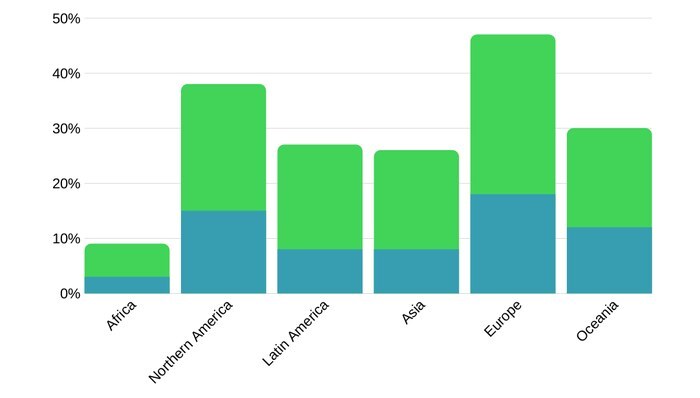
In the past, it was common for family members to take care of aging parents or grandparents. Today, there are fewer generational households. Younger generations are more likely to move away from home for study and work. In general, the family structure is also less stable due to a declining marriage rate and a higher divorce rate. Potential family carers who are part of the sandwich generation * have their own challenges that they have to figure out.
In plain language, this means that there will not be enough family caregivers to meet the needs of the aging baby boomer generation. Consequently, more families will rely on home services and elderly care services. It is clear that the demand for elderly care has grown so rapidly that we are already running out of resources to provide the necessary care for each senior.
Care providers are running out of resources
Providers in the care service are struggling to provide the necessary care and attention to all elderly users. Research shows that carers actually spend 20% of their working time traveling to and from patients, while approximately 19% of visits last up to 15 minutes (Overview of the domiciliary care market in the UK, UKHCA 2015). We have similar figures in Norway.
We can see that healthcare professionals are losing valuable time traveling or making unnecessary visits due to problems that could have been solved from a remote location via a video call.
" Old people often just want to talk to someone. However, carers have limited time to provide social care due to the time-consuming nature of travelling. Carers also carry out many tasks that could be outsourced such as grocery shopping or running errands. These tasks take valuable time away from the work carers are trained to do and which the elderly really need " (Tomas Posker, Aging2.0 Ambassador, CEO Oscar Senior).
Finding a good, responsible caregiver is not easy. The job is underpaid and not considered prestigious. With the increasing number of people who want to grow old at home, there is a greater need for carers who must provide help and support with everyday tasks. Surprisingly, even if three times as many people would be willing to become carers or caregivers, there still would not be enough due to the aging of the population.
Consequently, quality care is not provided for seniors, health professionals are overworked and frustrated, reputations among care providers are damaged and families lack the desired security.
And this is the tip of the iceberg, as there are also elderly people with special needs. Many suffer from Alzheimer's or dementia. They primarily need time with their carers, and sooner or later they need 24/7 care which is not cheap.
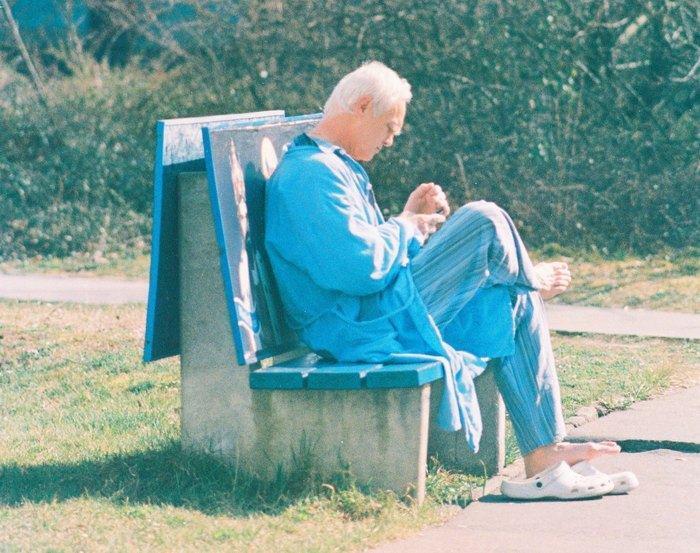
Welfare technology and remote assistance
The best way to give the elderly the care they need and deserve is remote care, virtual or distance care, also called RPM (remote patient monitoring). We need modern technology to support care services far away without time consuming travel while delivering high quality services. A number of technical aids can facilitate the work of carers:
Smartphones, tablets, wearable devices, sensors, cameras, smart homes, planning software and more.
These technological gadgets can:
- Monitor the elderly for caregivers
- Track the patient's health status
- Connect carers and the elderly
- plan the carers' visits more efficiently
- allow caregivers to handle multiple requests remotely without travel.
There is no single tool that provides all of the above. You need to connect all these devices together to get the most out of these tools, to get the best care in the most efficient way.
By unifying these tools in one platform, you can truly connect caregivers with their elderly clients and make it possible to care for them from afar without reducing the quality of care or the well-being of their elderly clients.
Choose equipment that is easy to use and friendly to the elderly. Adapting to technology can be difficult for some of your older clients since they did not grow up in the digital world. But with the right devices and tools and maybe a little help from you, they will benefit enormously from all the possibilities that modern technology provides.
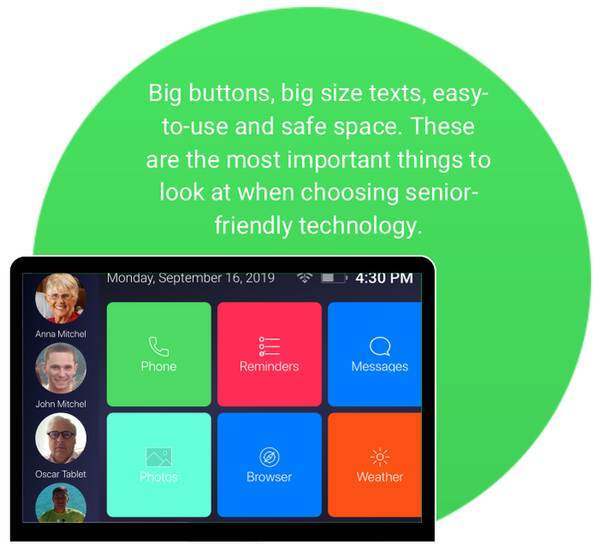
Let's take a look at some tools you can use to provide better remote assistance. See how you can pair these tools together to maximize your experience.
Wearable devices can remotely monitor seniors to complement your carers.
Wearable technology monitors the health and overall well-being of the elderly. They are able to:
- Detect falls
- Monitor blood pressure
- perform EKG
- use GPS to check the location of elderly care
- track her or his movement
- act as an airbag in the event of a fall
- make an emergency call, etc
People in the US using wearable technology: 9% in 2014 33% in 2019
(Accenture 2018 Consumer Survey on Digital Health)
The best thing about most wearable devices is that they can be connected to an app or integrated into a management platform. This enables caregivers in another location to get an overview of the user's health status and well-being. They can also receive automatic alerts if the elderly are in danger. So you don't have to go and check everything in person.
When connected to a management platform, wearable devices allow caregivers to continuously collect data and see any long-term changes for the user. This helps to provide alarms about signs of health problems that might otherwise be overlooked.
73% of people in the US see wearable technology as a good way to monitor the health of a loved one (Accenture 2018 Consumer Survey on Digital Health).
Sensors and cameras monitor what even healthcare personnel cannot detect
A huge help for home services are sensors and cameras that can be installed in the homes of the elderly.
Diss can check:
- The air quality
- CO2 level
- Temperature
- Light level
- Motion
- Entrance doors
With a good administration platform you can make use of these, for example you can connect a camera in front of the door to a notification system and manage the opening of doors instead of the senior.
When the elderly are connected to the management platform, caregivers can control some elements of the environment such as remotely locking doors to keep the elderly safe, or calling for medical help (113). Many elements can be monitored remotely, which reduces the number of unnecessary physical visits.
Smart-home technology takes these tools to the next level when connected and allows you to control all the parts remotely. Some smart systems allow caregivers to communicate with the elderly through installed microphones and speakers at home, although not everyone is willing to let the caregiver into their privacy to such an extent. However, it can be life-saving and particularly useful for people with dementia.
Salesforce or other CRM helps caregivers plan visits efficiently
CRM (customer relationship management) allows you to:
- Collect and analyze data about the elderly to provide immediate and appropriate help
- Keep track
- Plan your next visit
- assign the user to a specific caregiver
Care providers often use CRM software to schedule visits and make sure each caregiver knows what to do that day. Without connecting these tools, however, it is still just a planner.
Imagine what you could do if CRM would be connected to data from sensors and wearable technology. Imagine how much time your carers and nurses will save if they have all data from CRM, wearable devices and sensors in one place!
Use a tool to make everything work together
Without a management or board platform, care for the elderly can still function well, but only individually. For maximum use of these gadgets, connect and manage them all in one place to ease your work and the work of healthcare professionals and caregivers. You will be able to do it on an easy-to-use app for tablets, smartphones or desktop computers.
A good platform allows not only to make the most of the use of all these gadgets, but also:
- Improves communication with the elderly and prevents them from becoming socially isolated
- Enables remote treatment (medications, doctor's appointments, etc.)
- Enhances care with entertainment options
- Increases independence of your customers
- Can potentially delay the onset of dementia.
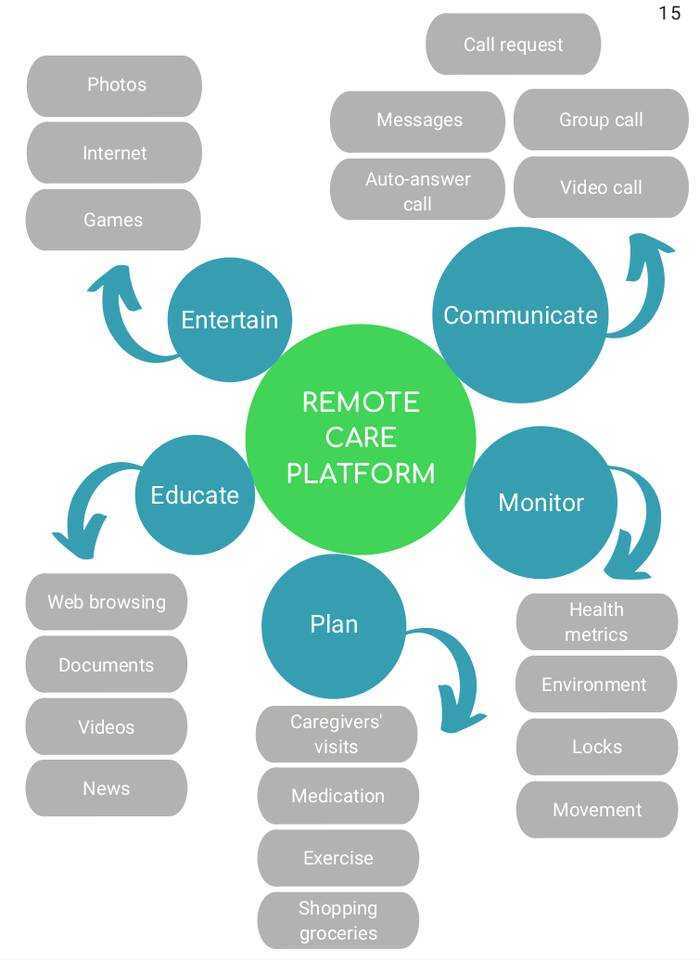
Case study: How a remote assistance platform helped an American home care provider
The home service has 1,500+ users and over 100 employees. They needed to:
- Avoid unnecessary visits
- be more efficient in planning
- limit face-to-face visits
- improve communication between carers, users, family and friends
- introducing welfare technology for the elderly
The solution
The home service received a dashboard solution for the operators of its own call center and an elderly-friendly app for the users' (patients') tablets or mobile phones. Via the external care platform Oscar Senior, users can send a request and the operator calls back with a video call. This can be used as a check, to provide assistance and support, or to schedule a physical visit when necessary.
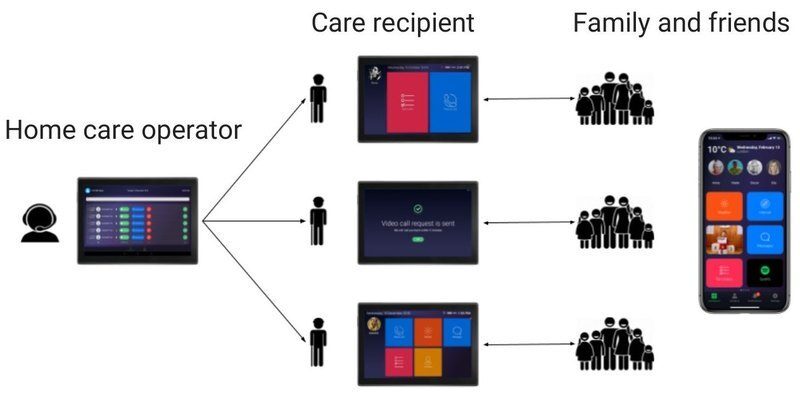
If a user does not respond or has a condition that limits physical actions (such as Parkinson's) the video call can be configured to start automatically after a time. Oscar Senior was designed with and for the elderly. For this home service, the platform acts as a gateway to welfare technology in elderly care.
Care services can integrate other technical gadgets into the platform, such as heart rate trackers and motion sensors. This integration simplifies the application of these technologies for the elderly.
The results
- 24/7 assistance, regardless of location
- On average, 41% longer stay by health personnel with users during visits
- 70% of users make use of Oscar Senior daily
The service limited unnecessary visits since these were covered by the operators via video calls. The platform also improved communication between the elderly, their families and friends. Therefore, the recipient's well-being improved and the caregivers began to notice a reduction in loneliness.
Users soon warmed to the use of Oscar Senior as they not only used it to communicate with the home service, but also to surf the web, play games or read the news.
Summary
We may think that the elderly are afraid to use technology. But with a little time and effort, we can help the elderly learn the use of new technological tools. This opens up a world of possibilities for them and their carers, because it is becoming increasingly difficult to make daily or weekly physical visits to all the elderly at their place of residence.
Welfare technology and remote care may actually be our only chance to make aged care work. Although virtual care is not a full replacement for face-to-face, it is a necessary supplement to the traditional way of care that allows you to increase efficiency and lighten the care burden.
Find out if Oscar Senior can help you with your challenges!
You are most welcome to contact us to find a solution together.
If you think this sounds exciting and you have a background in sales or marketing, or are a healthcare professional and want to be involved and develop this further, then don't hesitate to send an email or call !
More resources
Also check these 3 videos for the use of the platform we now offer:
Video 1 , for the use of seniors
Video 2 , for healthcare personnel, home care and care providers
Video 3 , real user case i from Great Britain
* What is the sandwich generation?
The sandwich generation consists of people from both Generation X and baby boomers. They are people of childbearing age who are sandwiched between caring for their children as well as their aging parents (Pew Research Center, The Sandwich Generation by Kim Parker and Eileen Patten).


All comments are moderated before being published. Your email will not be visible